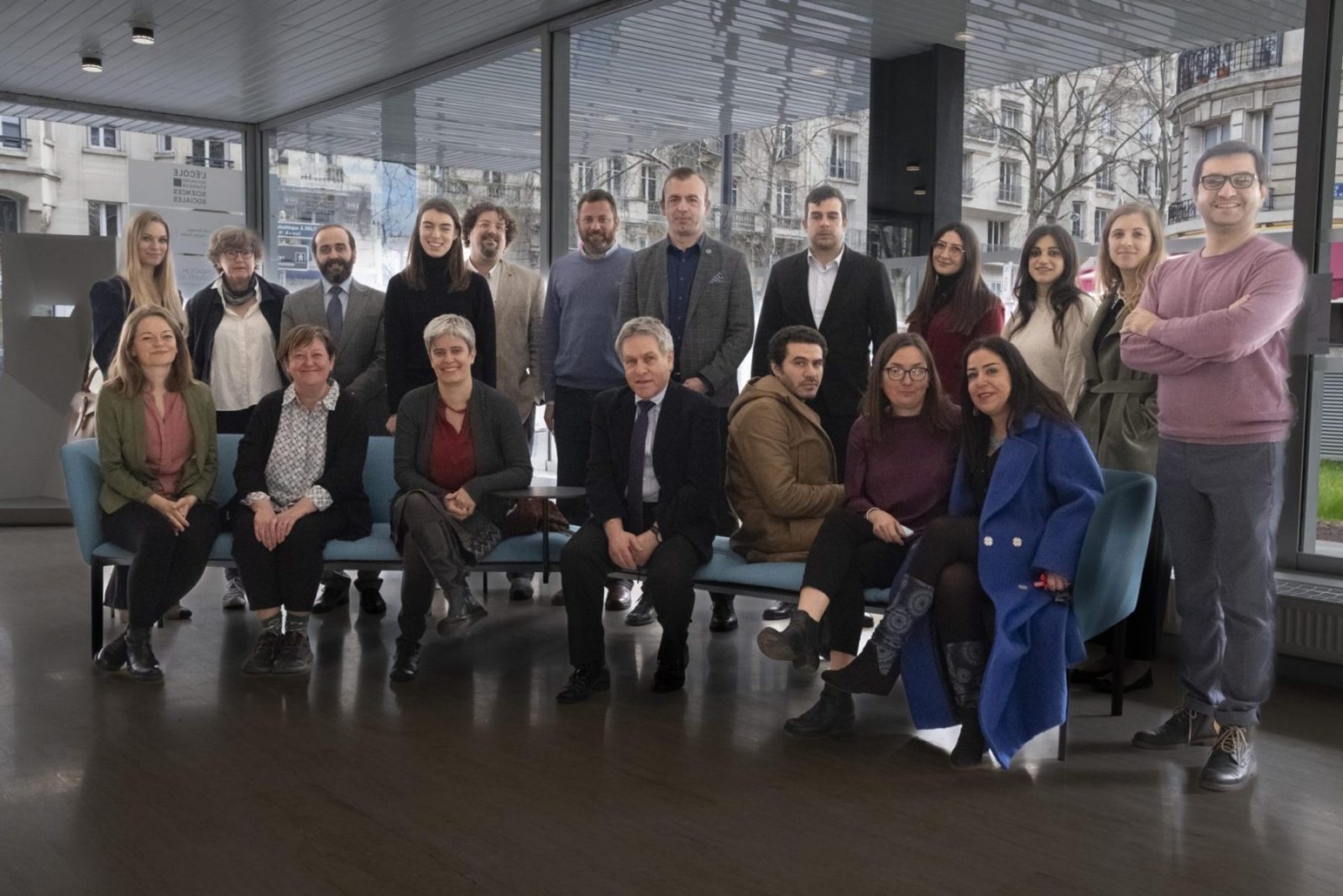On 23rd February 2022 the H2020 sister projects PAVE, CONNEKT and PREVEX met to exchange about preliminary research findings, to discuss commonalities and differences between the three projects, as well as to explore avenues for further cooperation and future coordinated policy engagement. The meeting took place in a hybrid format, allowing for participation online as well as in-person at the Fondation Maison des sciences de l’homme (FMSH) in Paris.
Researchers from the three consortiums presented preliminary results, described their experiences and the challenges they encountered when researching radicalisation and violent extremism (VE) in the Western Balkans and MENA region. The discussions evolved around terminology caveats, the common focus on the meso-level, concrete country findings and regional trends on drivers and features of violent extremism in the Balkans and MENA region, and exploring possibilities for comparison between these two focus regions and different manifestations of radicalisation and extremism.
The sessions were set up to include one speaker per project in each session, in order to shed light on the topics from all three projects’ perspectives.
The first panel focused on discussions about terminology and presentations of the main focus areas and overall approaches of the three projects. The normative connotations carried by the terms radicalisation and resilience were discussed and the researchers agreed that the applied terminology needs to be treated with caution in order to not fall into the trap of transporting one-fits-all paradigms and assigning comparability to the diverse localities examined by the three projects. While the international community has a tendency to establish fixed terminology, these terms carry diverging meanings in the different local contexts. Nevertheless, all three projects seek to contribute to changing and re-claiming the meaning of these terms.
The second session delved into community-level approaches. Despite their common attempt to define community as a meso-level unit of analysis for studying (de)radicalisation dynamics, the three projects operationalise the term differently. CONNEKT understands communities as either physical or non-physical social contexts that represent a network of individual and collective interrelations. While conceptually understanding communities as areas in which a combination of factors creates a conducive environment where violent extremism is possible, the PREVEX project defines communities in each field site in a bottom-up fashion, according to the understanding of the concerned population. The PAVE project, finally, focuses on municipalities as geographical markers of local communities. This allows researchers to grasp the roles of important stakeholders and leaders, and tailor recommendations derived from research directly to these, since they hold privileged positions to tackle violent extremism.
During one panel focusing on country findings from the Western Balkans and one panel focusing on findings in the MENA region, the immense range of collected data and the diversity of the research contexts was substantiated. One of the commonly experienced challenges appeared to be how to avoid the reproduction of pre-existing patterns of stigmatisation. Especially Muslim populations feel stigmatised and show a high degree of research fatigue – “stop researching us!” – as one participant quoted respondents from Serbia.
The discussion in the final session was centered around the question: ‘Can MENA and the Balkans be compared?’. In general, it was shown that there are a lot of common factors for the occurrence and non-occurrence of violent extremism across the projects and regions, while the observed types of radicalisation and violent extremism, and their interactions vary greatly. This observation will be kept in mind in the process of further data analysis and the question of how context-specific research can be conducted that at the same time allows for a certain degree of comparability will stay relevant for all three projects.
In all studied contexts, it was observed that governmental approaches to VE are still heavily securitised. In order to overcome past mistakes in addressing violent extremism, the three projects agree that a focus on building resilience carries great potential for improvement.
In addition, the ambiguous role of civil society organisations in CVE and de-radicalisation programmes in both regions was discussed. While locally-based civil society organisations can meaningfully contribute to building resilience against VE, internationally operating and foreign funded CSOs tend to lack legitimacy and their work is often perceived as merely donor-pleasing by individuals from the communities. In both regions, it is also important to take into account external factors influencing community-internal dynamics, such as national policies, intervention by foreign state and non-state actors, as well as transnational interactions with the Diaspora.
After this first fruitful collaborative effort by the three sister projects, we look forward to continue the exchange and to expand and intensify our three projects’ cooperation in the coming months.



